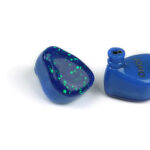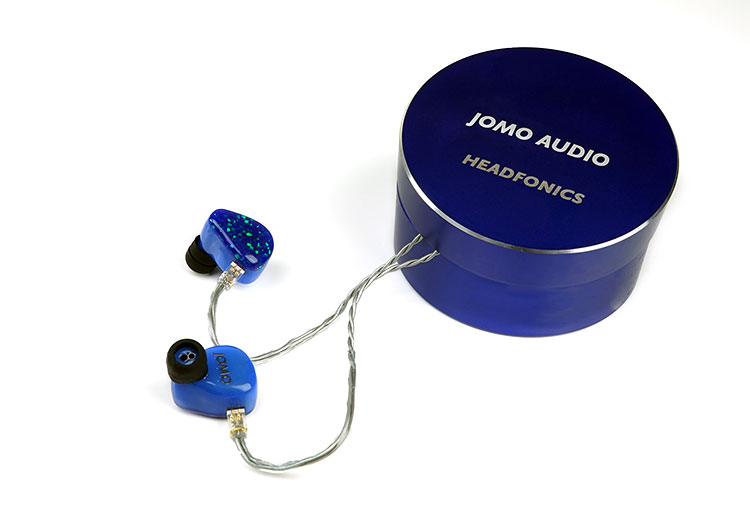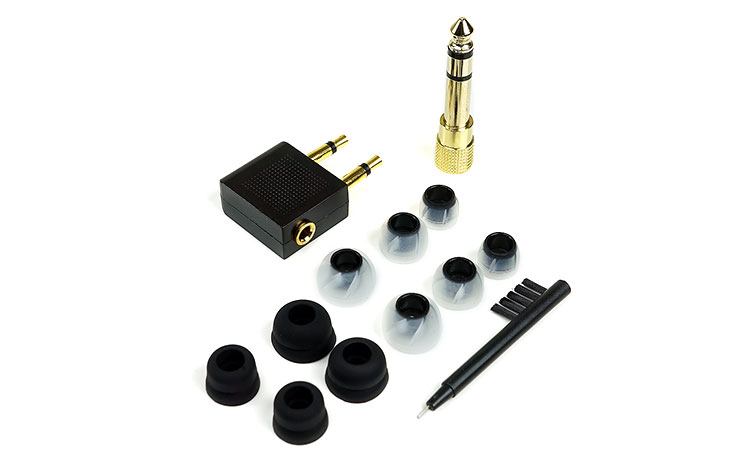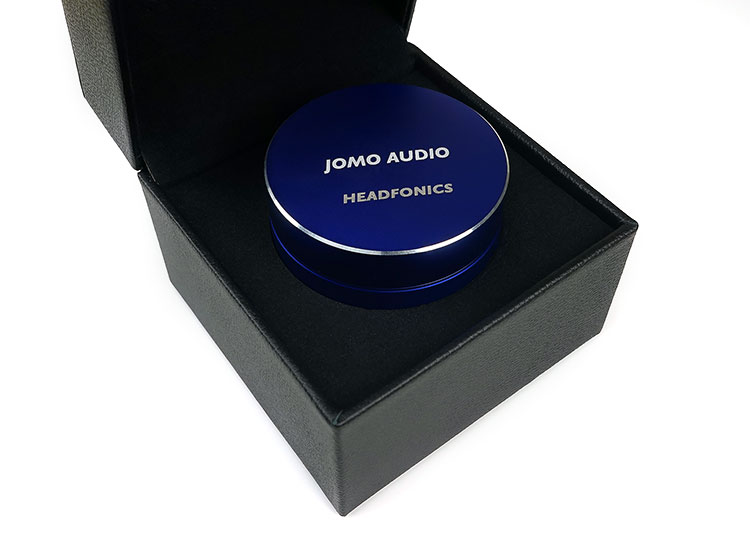Today, we review the Jomo Audio Pretty Little Beast, which is a new triple-balanced armature driver universal in-ear monitor.
Disclaimer: This is a sample that was sent to us in exchange for our honest opinion. Headfonics is an independent website with no affiliate links or status. We thank Jomo Audio for this opportunity.
To learn more about Jomo Audio products that we have previously featured on Headfonics you can click here.
Note, that this article follows our latest scoring guidelines which you can read up on here.
I first met with Joseph regarding the 6 and 6R in mid to late 2015 and I kicked off the review of those two products stating the Singaporean-based Jomo Audio as a relative newcomer.
It certainly does not feel like that anymore with TOTL products like the Samba and Flamenco hitting the headlines quite recently in terms of technical excellence as well as developing a fairly hard-core fan base. Jomo Audio has been consolidating its position as one of the top CIEM makers in quite a rapid fashion.
If CIEMs are not your bag then you can also get a universal version of pretty much anything Jomo Audio makes from their CIEM line.
The all-new Pretty Little Beast, or just simply PLB, is perhaps unique though in the lineup as the first wholly universal IEM launched by Jomo Audio. There is no custom alternative for it. It retails for S$699.00 or around US$520 so it places it right in the sweet spot for good-performing multi-driver IEMs.
Tech Highlights
Technology
The PLB is an eye-catching triple BA universal design with a traditional 3-way passive crossover.
Triple BA designs have come a long way in the last few years with much superior bass drivers offering a better low-end response than the previous mid-centric compressed sounds. The ES3 from Earsonics is proof positive that you can now get excellent 3-driver designs at these price points.
Tonal Pitch
What’s in a name? Pretty Little Beast might initially sound like an aesthetic marketing moniker because it does look pretty to the eye but in actual fact, the name Pretty Little Beast is a pitch on the sound signature of this triple BA driver IEM.
Looking at the short description on their product page will give you a solid idea of where the beast aspect has a role to play in the naming of the PLB:
Powerful, warm bass with full body of kicking on the drum. Forward mid-range vocal with some magical sparkly notes on high. Delivering an enjoyable musical experience with no fatigue.
It’s clear Jomo wants the PLB to appeal to the modern consumer market and current popular music genres without leaving audiophile sensibilities far behind. From the packaging to the IEM design the PLB is pitched to catch the eye and yet the price remains competitive and within reach to the more casual listener.
Jomo is positioning the PLB as their ‘pick and go’ universal IEM for everyday listening. An IEM that is more about enjoying the music than any overtly analytical correctness.
Design
Materials & Finish
The PLB is a two-piece acrylic shell design with the top plate made from a Japanese hybrid opal faceplate finished with a deep set reflective green glitter array and a light silver sparkle on the main body.
It is an all-blue finish, there are no other variations available but it’s well done. It sort of reminds me a little of the YK1 from Aya Audio though that one was in a very striking yellow/gold combination.
The edging is very smooth, nothing rough or unfinished looking helped along by a nicely applied translucent lacquer finish over the entire shell.
Form Factor
The form factor is reasonably deep, not too dissimilar to the Noble Audio universal shape for the lower shell but with more of a Wizard Edition style on the top. It is not contoured in the manner of the IT03 from iBasso, it is a little more uniform in that respect though the pear-shaped curving will generally make it a comfortable fit.
The dual bore nozzle extends from the further front of the base shell with only the tiniest of tilts and is fairly short with a decent lip for holding tips in place.
It doesn’t need to be that long in all fairness the depth of the main body at that nozzle point is already quite good and the rest of the seal will come from the supplied tip.
The shells are terminated with a 0.78mm standard 2-pin non-recessed socket with a translucent plastic finish differing slightly from the main body color scheme. This IEM is designed to be worn over the ear, there is no straight-down option.
Cable
Jomo has paired the PLB with a gray/silver Plastics One cable around 1.2m in length and terminated with gold-plated 0.78mm 2-pin connectors. The main jack is a right-angled 3.5mm gold-plated stereo jack with decent strain relief.
The Y-split is a hard plastic design with strain relief on either side of the joints and an adjustable translucent plastic chin strap tube just above it.
The top end is terminated with a translucent memory jacket that is reasonably stiff and retains any shape within reason. Glasses wearers might find the memory coating a little thick and less pliant than the Noble Audio version’s shorter heat shrink.
Upgrades?
The cable for me is fairly standard for a CIEM offering. It is designed to be lightweight, easy to use, low on microphonics, and not cost a ton if lost.
It is however unremarkable in sonic delivery and most likely an OFC-type triple conductor design that will contribute, and then some, to the inherently warm signature of the PLB. I am expecting something more dynamic using SPC or silver Litz so it might be worth looking into a cable upgrade at some point if you have the budget.
Comfort & Seal
Rock solid and a very satisfying fit for my set of abused ears. The smooth contouring prevents any unwanted pressure points on my tragus and crus helix ridges and instead, I get a tight but very comfortable fit.
There is no lateral movement either, open or closed jaw does not introduce any unwanted gaps forming in the seal. They do stick out a little, but they are not tiny like Westone
Tips
Given the slightly stubby nature of the nozzle, there is a bit more emphasis on the tips providing the seal with the PLB. Jomo has provided two distinct types of tips, both of which are silicone rather than foam-based.
One set is a dual flange black silicone in small, medium, and large. The other are 3 pairs of Tennmak Whirlwind tips also in small, medium, and large which are known to be fairly durable, good at isolating, and add a little kick in the low end.
Normally I aim straight for foams but these silicone tips are fantastic performers for blocking out background noise and offering a very high standard of isolation. The Tennmak large single wide bore tips worked slightly better than the dual flange tips though the dual flange perhaps had a bit more comfort.
Accessories & Packing
This is an excellent presentation from Jomo for the PLB. It is a style reminiscent of the more expensive A91 from Fidue with everything neatly packed into a stylish leather display box with the Jomo Moniker on top in a light gold coloring. It is a million miles away from the plainer packing of some competing products out there.
Just in case you think the packing is a bit too big Jomo has included a screw top round hard case right in the middle which pretty much holds everything that comes with the package including the IEMs.
I believe you can request your name on the screw lid, not 100% on that but it is a nice touch. The case itself is a solid metal construct, a style now very popular in SEA for IEMs, and will take a hell of a beating.
For the rest of the accessory pack, you get a cleaning brush, your two types of tips in small, medium, and large as well as an airline and quarter jack adapter.
In terms of sheer quantity, it is competitive if not class-leading. I would love to have a few more variations on the tips in the style of Westone. However, the cool display box more than makes up for any accessory shortfall.
Sound Impressions
Summary
The PLB is a full-sounding signature with a warm to natural tonality and a bias to the low-end but it is also a remarkably big-sounding triple-driver IEM.
Despite having a slightly laid-back top end it doesn’t come across as overly attenuated or dark sounding. There is enough clarity and articulation in the treble performance to avoid that shelved-down feeling which makes it all the more enjoyable.
The switch to new drivers by Jomo and the use of a larger dedicated BA bass driver do help to deliver some additional weight and impact in the PLB response.
In some ways, I am reminded of the ES-3 from Earsonics with its presentation though the PLB is slightly the weightier and more planted of the two. The PLB certainly has very good depth and the distinct lack of compression in the mids to upper mids is aided by a very smooth-sounding elevated vocal presence.
I get why this presentation is being touted as a good pairing for modern genres. It trades analytical accuracy for something a little more euphoric, colored, and fun with just enough edge off the top end to be forgiving on just about any source.
Mind you, in our testing, the best sources were those that kept the low end as tight and aggressive as possible.
Tips Choice
Just a short note on tip selection. The Tornado tips were cleaner and snappier sounding with the PLB over the dual flange tips. The dual flange tended to produce a duller sound and killed the energy and sparkle of the top end in comparison.
Bass
I am impressed with these new bass drivers. They sound much fuller and smoother than older Knowles variants. The texture is much superior and the detail has gone up a notch.
Having said that the PLB’s sub-bass response is not overly physical but neither is it rolled off or lacking in extension. It is only slightly north of neutral but the payoff is that it is more tactile and not as sluggish sounding as some heavy-handed dynamic driver responses with a reasonably quick level of decay.
In the context of modern pop and R’n’B, that is okay actually since quite a lot of impact is driven from around 60-80Hz upwards and there is more of an emphasis on solid fundamentals driving the beat than sheer physicality.
PLB’s curve seems to peak around this range which is where some of that warmth and fullness resides in its signature. It’s more of a gradual up and down than anything horribly uneven and bloated so its drop into the mids is not steep and disjointed sounding.
It also means it carries a little of that fullness into the lower mids and into some instrumental timbre making it a little thicker sounding around 300-500Hz.
Mids
Mids on the PLB are a game of two halves for me. Its lower mids are quick thick and textured with a bit of warmth carried through from the bass response. Instrumental clarity is just okay, a little soft with perhaps a more even-harmonic bias that leaves guitar and rock workouts a little hazy and lacking in quality separation.
Overall, I would EQ around 400-800Hz down by 2-3dB for most rock and guitar work and take some of that boosted warmth out. It might produce a slightly leaner sound but should help inject a bit more clarity into the process.
The other half is the vocals and upper mids. Vocals on the PLB are smooth, forward sounding, and very easy on the ear.
It is a little rounded in attack with the stock cable but otherwise excellent, particularly with sparser R’n’B and pop arrangements where the forward vocal is not competing with guitar, bass guitar, or any combination of lower-stringed instruments.
Male vocals are a bit warmer than female vocals which benefit a little from the additional energy and sparkle in the upper mids and lower treble of the PLB.
Treble
Upper mids are cleaner, with a rise from 3k onwards (crossover point) sneaking into the lower treble of the PLB and generally topping out around 5k. There is a dip post 5-7k and a slight uptick around 10-12k for a little bit of upper treble sparkle. Generally, percussion work is clean and energetic though a long way from being peaky or overly boosted.
There is a slightly harder edge also in the lower treble response over the rest of the range, perhaps a characteristic of the top-end driver tuning providing a bit of contrast and energy compared to the warmer low-end bass driver.
Despite its cleaner edge, you won’t find anything splashy or sibilant from the PLB, it’s not overly forward in that respect. Nor will you find it overly attenuated or shelved down so it does have decent headroom.
Click on page 2 below for our recommended pairings and selected comparisons.





